One of the first things that you need to do when entering any study is to define what you are studying. I have read a huge number of articles talking about ‘right wing vs left wing politics’ and a fatal flaw in almost all of them is a failure to define their terms. So I am very encouraged that we are spending so much time working on definitions.
I am surprised, however, at how much difficulty there seems to be with my concept of the ‘definition’ is. I did and do propose that all ‘definitions’, especially in things like social science, must and do consist of three parts:
The definition itself. This is what the thing is, with no additions or subtractions. The theory.
The ideal. The thing we are talking about is surrounded by all sorts of additons, all sorts of ‘well, in the perfect case’. So if we are talking about a ‘dog’, then the ‘ideal’ is Lassie. We often try to mush the ideal into the definition, and we need to seperate them out. So you might ask yourself, “If two people aren’t ‘in love’, can they still be married?” If the answer is ‘yes’, then ‘being in love’ is part of the ideal, not the definition, of marriage.
The practical. This is the opposite of the ‘ideal’. According to the Wikipedia, “since 2019 the metre has been defined as the length of the path travelled by light in vacuum during a time interval of 1/299792458 of a second, where the second is defined by a hyperfine transition frequency of caesium.[2]”. Yet there is not a single ‘meter’ in all the world that meets this definition exactly. We walk around saying something is ‘1.5 meters’, all the while knowing full well that there is an exact definition for a ‘meter’, and that this things isn’t exactly 1.5 of those.
I believe that this discussion, like all discussions on social issues, is most profitable when we acknowledge all three of these.
In the world of birds, we have several examples of true monogamy, meaning sexual and social. We already mentioned how 90% of birds are socially monogamous, but not all are sexually monogamous. However, certain species are all-in on the monogamous lifestyle, and we can start the list with the barn owls. It is one of the most widespread species of birds, and they also stay loyal to a single partner for their entire life. Males do their best to seduce the females by giving them gifts and loudly screeching, and once they fall for their charms, the couple is set for life.
https://www.worldatlas.com/feature/which-animals-are-actually-monogamous.html
MONOG'AMY, noun [supra.] The marriage of one wife only, or the state of such as are restrained to a single wife.
MONOG'AMIST, noun [supra.] One who disallows second marriages.
Webster’s 1828
“The social practice of having only one sexual partner for life.”
Von-2024-Written specifically for this discussion
monogamy /mə-nŏg′ə-mē/ noun
-The practice or condition of having a single sexual partner during a period of time.
-The practice or condition of being married to only one person at a time.
-The practice of marrying only once in a lifetime.
The American Heritage® Dictionary of the English Language, 5th Edition
“Monogamy” is an umbrella term for a set of marriage and mating customs (both formal and informal) that prize the erotic pair-bond of a couple as the organizing principle of civilization.
J. Daniel Sawyer
-Written specifically for this discussion
Now I wish to pick apart J. Daniel’s definition a bit, because it has a hard time fitting into the discussion. Indeed he hardly seems to use it himself. So let’s go through it and find some difficulties…
“Monogamy” is an umbrella term…” Ok, that’s good. It means that there can be more than one way to go about monogamy and, as long as they fit in the restof the definition, they’re good.
“for a set of marriage and mating customs…” I think this has to be ‘any set’ myself. Unless we are talking nesting sets. YOu can have ‘Set A’ of marriage and mating customs’ and have ‘Set B’, and as long as they both fit the end of the definition, they are both ‘monogamy’.
“… of marriage and mating customs…” A quick question, does ‘mating’ mean ‘sex’ here? So this would be customs that govern both ‘marriage’ (the formal sexual relationship) and ‘mating’ (informal sexual relationships).
“… (both formal and informal)…” good.
“… that prize…” Fascinating. A bit problematic, cause I think you would need to add ‘and support’ here to make it work.
“…the erotic pair-bond of a couple…” This seems to me to need some work. What if a couple has sex, even lots of sex, but isn’t ‘into each other’, do we still call that ‘eros’? And what is a ‘couple’?
“…as the organizing principle of civilization….” ‘The’?!And should this be ‘their civilization’?
So with those various caveats, I like his definition of monogamy… and I think it will be helpful in looking at the current death of monogamy… but it means that, except for polygyny (commonly called polygamy) it is the only game in town. There have been monogamous societies, and polygamous ones, but never, in the broad and successful sense, anything else.
“Polyamory” is an umbrella term for all marriage and mating customs that involve the socially-sanctioned maintenance of more than one simultaneous, ongoing erotic pair-bond.
J. Daniel Sawyer
However for the purposes of the discussion his definition of ‘polyamory’ is unhelpful because it is not a direct contradiction of his definition of monogamy. Indeed, they can sort of being combined:
“Monogamy” (an umbrella term for a set of marriage and mating customs (both formal and informal) that prize the erotic pair-bond of a couple) is the organising principle of civilisation, which civilisation also includes “Polyamory” (an umbrella term for all marriage and mating customs that involve the socially-sanctioned maintenance of more than one simultaneous, ongoing erotic pair-bond) which exists but is not part of organising civilisation.”
Or, assuming the definitions, “Civilisation includes both monogamy (its organising principle) and polyamory.”
Measurement
Monogamy as a social institution is not just dying. It’s dead. Because of the power of human pair-bonding (and the force of law), nominal social monogamy will continue to be the norm when and where people actually bother to partner up,
J. Daniel Sawyer
One of the most important reasons to have a definition is so that you can measure things. If a definition does not lead to the ability to measure, in this case, measure over time and across cultures, then it is not a useful definition for a discussion of how something has changed.
One important thing to notice when comparing our two definitions is literally what we would measure. For example, his definition uses the word ‘prize’ and the word ‘principle’. So we would need to be able to measure how much a society prizes something, and to what extent it is a principal in their civilisation.
Whereas for the definition that I use, the measurement of monogamy would be almost exclusively having to do with sexual relationships. Thus, a male, be they human or a bird, who, during their entire lifetime only had sex with one female would be at the highest pinnacle of monogamy. And the couple who both achieve that would as a couple be at the highest pinnacle. Whereas a male who had had one or two prior partners, and then then spent the next 10 years only having sex with one female, and having sex with that female, would be slightly less monogamous, but still much more monogamous than a male who every other weekend was changing partners.
So when he says ‘Monogamy is dead’, I wish to know what he measured? What level of ‘prize’ and ‘principle’ was lacking for him to issue the death certificate?
Polygamy
“Polyamory” is an umbrella term for all marriage and mating customs that involve the socially-sanctioned maintenance of more than one simultaneous, ongoing erotic pair-bond.
I would also have a question… what would he actually call the polygamous societies of the past? Would he call them ‘polyamorous’ because some of the upper crust had more than one wife? Or monogamous because the society, as a whole, was organised around people having one wife?
In my view regular polygamy (the kind that was practiced historically) is actually, looked at from its social function, a form of monogamy. It’s values and purposes are largely the same; and in stark contrast with polyamory.
Dating
-The median number of sexual partners is 6.3 for men and 4.3 for women in the U.S. (ages 25-49).
-Informal survey data suggests the preference for lifetime sexual partners ranges from 2-7.
https://www.psychologytoday.com/us/blog/the-state-of-our-unions/202309/how-many-sexual-partners-should-we-have-before-marriage
Now I do need to get to the subject of dating.1 Because according to my definitions, dating is the death of monogamy. But even by his definition, dating is in contradiction to monogamy.
According to my definition, dating is antithetical to monogamy because of how it multiplies the number of sexual partners. According to his, because there is nothing to ‘prize’. A dating society is certainly not organised around the dating relationships.
When we examine this from the standpoint of the definition vs the practical, we notice that dating is a not a monogamous practice in the United States. But notice the ‘ideal’ in the quote above! In the past it would at least have been standard that men would have wanted to marry a virgin, and women would have wanted to be their husband’s first. But now, if this study is to be believed, it seems that men are coming into marriage hoping that their to-be-wife will have slept around before marriage… with somewhere between one and six other men! It doesn’t seem as if they merely accept that, but that they desire it.
History did not begin in 1950
Paternity tests are less than a hundred years old, and reliable ones are less than thirty years old. This means that, before right now, women’s sexual decisions were all made under threat of pregnancy and death (death in childbirth is a non-trivial risk in a pre-WW1 context), while men’s sexual decisions have usually (with some notable epochal and class exceptions) been made under threat of multi-decadal paternal obligation
J. Daniel Sawyer
The quote above is rather incoherent,2 but the fact that he is willing to go back in history before 1950 is a good sign.3
To rewrite his quote: Reliable birth control and paternity tests are less than thirty years old, and so social customs before then tended to insist that a woman only have sex with a man that she had reason to expect would stick around and help raise the children; and that a man who slept with (or was perceived to have slept with) a woman take responsibility for her children. Chaste maiden and shotgun marriages both grew out of these issues.
One important issue to keep in mind when we look back in history is that iw as usually not just the woman who was responsibility for the child. Her extended family would be obligated to help care for her and him; thus they could be rather draconian in enforcing the rules.
Agreement
seems to believe that we will find very few points of agreement, but so far we seem to be doing rather well. I found much of his history and reasoning quite interesting. It is a shame that he didn’t do the three-fold analysis I suggest, because that would have been even more interesting. Over the ages, where prostitution was alternately legalized and forbidden, there was also social approval or shame heaped upon them. Thus it might be legal, but shameful, or even, perhaps, illegal but considered praisworthy or high class.Is it any wonder that the divorce rate shot through the roof as soon as divorce laws were liberalized, or that marriage rates have tanked in the generations following?
J. Daniel Sawyer
We agree on the problem of no fault divorce or, as he puts it, liberalised divorce laws. I would also add that divorce has shot up for several other reasons, some of which he mentions or hints at:
-Lack of sexual access
-Sexual activity before marriage (known to lead to higher divorce rate)
-Government funding
-Alimony and child support
-Death of gender roles
-Women working outside the home
-Women’s education
When you don’t have a family and a culture and a tradition to provide context to your life,…you don’t have a kinship network to help enforce the various implicit agreements in a marriage and to help protect your children from abuse, it’s very difficult to keep a healthy relationship going
J. Daniel Sawyer
We also agree that family, culture, and tradition are important in monogamy. I think the importance of the ‘ideal’ come into play here. Because ‘culture and tradition’ tend to teach the ‘ideal’. Yes, they have practical effects, but their overwhelming effect is to teach the ideal.
I am a little surprised, although pleasantly so, by his comment on how the extended family tended to help the couple keep their marriage commitments, including sexual commitments.
The differences in the way men and women experience their sex drives are so profound, that sex—which is as basic to life as eating—can be profoundly destabilizing absent a context that provides harmonization between the two.
J. Daniel Sawyer
I wouldn’t have put it this way, and he seems to put it several different ways himself, but I think we both agree that the male/female differences are both hugely significant in themselves, and in the nature of and reason for, marital relationships. This subject is so huge it could use a post by itself.
Introduction and Conclusion
This post is in response to J. Daniel’s latest post, “The Progressive Myth of Monogamy'“. It was an excellent post although I must say I don’t see what the title has to do with the post. He makes a case, albeit a weak one, for the myth of romance (his history is decidedly weak there4) but not for a myth of ‘monogamy’.
It is a shame that he struggles with the ideal vs the practical vs the definition… cause it comes in through the back door time and time again. Which would be my point: our society has ended, in large part, monogamy as an ideal. We have done that first of all via ‘dating’, and then via divorce and the resulting serial monogamy. We have destroyed the foundations of monogamy via feminism and anti-natalism.
I am not saying that monogamy is dead, still less am I saying that it never existed. But its societal foundations have been destroyed in the west. I also believe that the situation is, in one sense, self-correcting. A society which does not produce children will died, and will thus be replaced by a society that does.
Thank you for reading Von’s Substack. I would love it if you commented! I love hearing from readers, especially critical comments. I would love to start more letter exchanges, so if there’s a subject you’re interested in, get writing and tag me!
Being ‘restacked’ and mentioned in ‘notes’ is very important for lesser-known stacks so… feel free! I’m semi-retired and write as a ministry (and for fun) so you don’t need to feel guilty you aren’t paying for anything, but if you enjoy my writing (even if you dramatically disagree with it), then restack, please! Or mention me in one of your own posts.
If I don’t write you back it is almost certain that I didn’t see it, so please feel free to comment and link to your post. Or if you just think I would be interested in your post!
If you get lost, check out my ‘Table of Contents’ which I try to keep up to date.
Thanks again, God Bless, Soli Deo gloria,
Von
Links
The Death of Monogamy: The Definition(s)
One of the most annoying things to happen in a debate discussion is to find out that two or more of the participants have been using different definitions for the same word or words. Which tends to mean that they disagree even more than it seemed in the beginning, or that they actually agreed from the first.
For the purposes of this paper, dating means the social system of arranging for time together of an unmarried male and a female which often includes sexual activity.
The presence or lack of paternity tests make no difference in the risk of pregnancy and death. That would be birth control and modern surgery. And paternity tests have made no difference at all in a mans sexual decisions. The only men ‘helped’ by paternity tests are those who sleep with a woman too soon after she slept with the last guy.
For many social commentators 1950 seems to be ‘the dark ages’, and they rarely look beyond that in history.
He speaks of ‘when prostitution was made illegal’, ignoring the fact that it was made illegal in Islam in the 700’s, and then he seems to blame both prostitution and the end of prostitution for the death of the family… and blames the lack of the extended family as well.




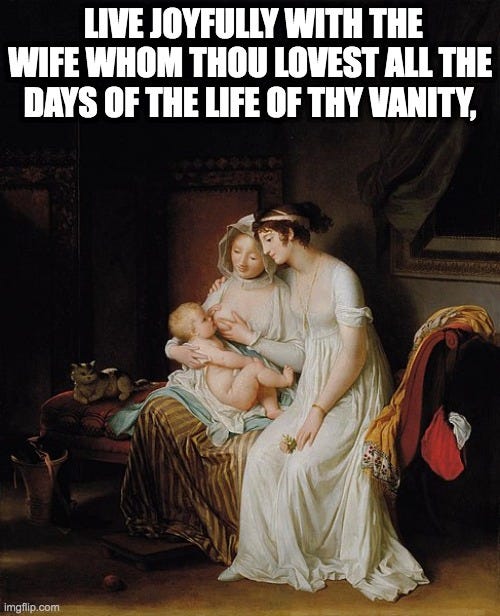
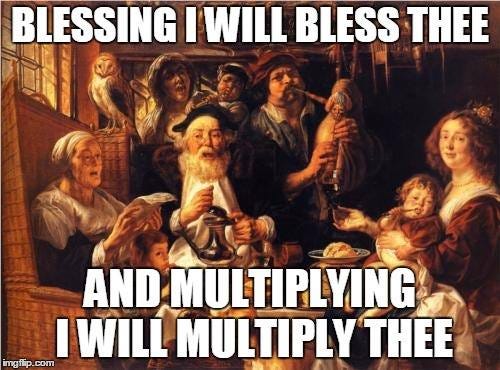
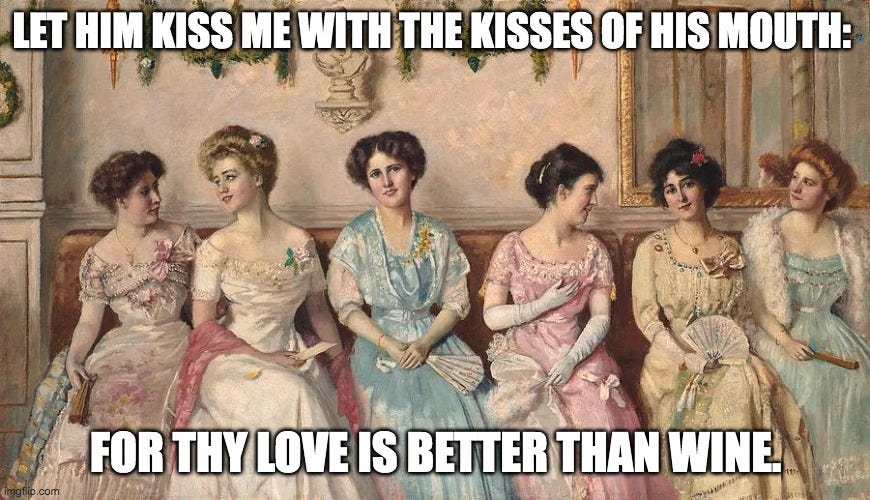
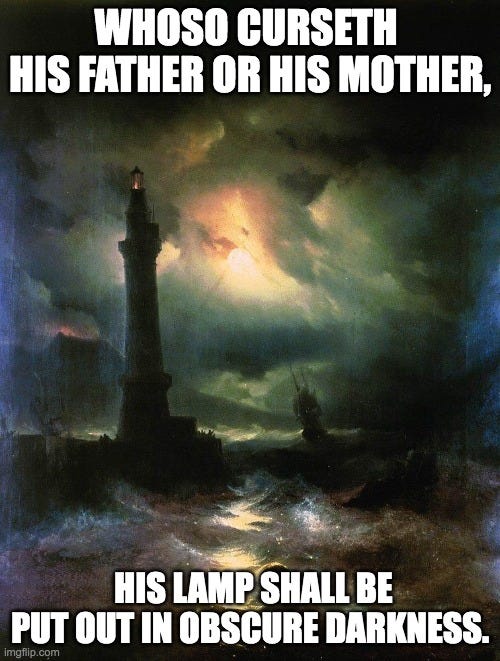
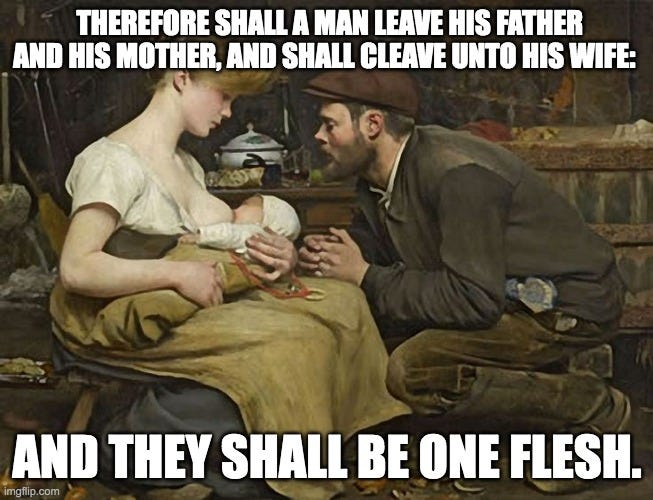



For future reference:
https://open.substack.com/pub/fiamengofile/p/are-women-the-biggest-losers-of-the?r=6csnm&utm_medium=ios
For future reference:
https://open.substack.com/pub/movingtorussia/p/sexual-restraint-helps-cultures-flourish?r=6csnm&utm_medium=ios